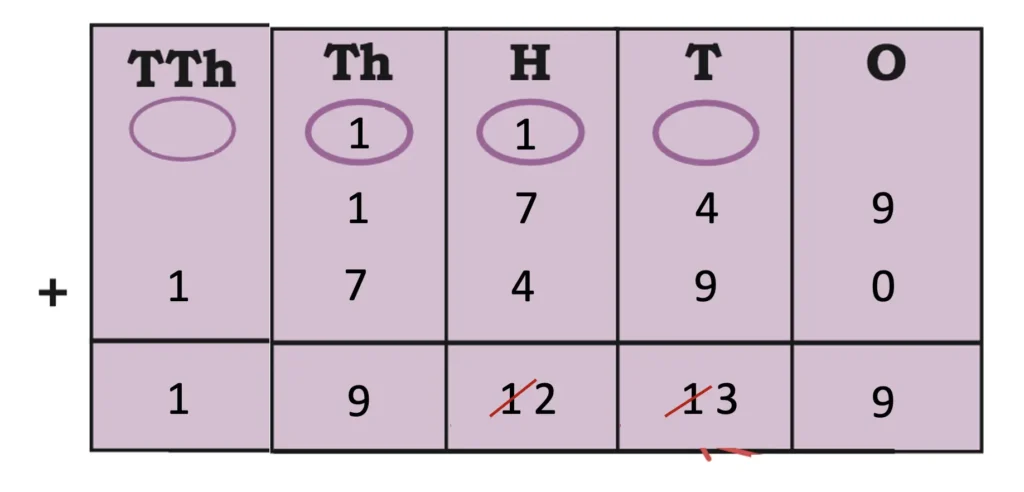Class 5 Maths Mela Chapter 4 We The Travellers – II NCERT Solutions
Textbook Page 42
Making Sums Equal
Q. In each of the following, there are two groups of numbers. Look carefully at the numbers in each group and their sums. Interchange pairs of numbers between the two groups to make their sums equal. Try to do this using the least number of moves. You could write each number on a small piece of paper.
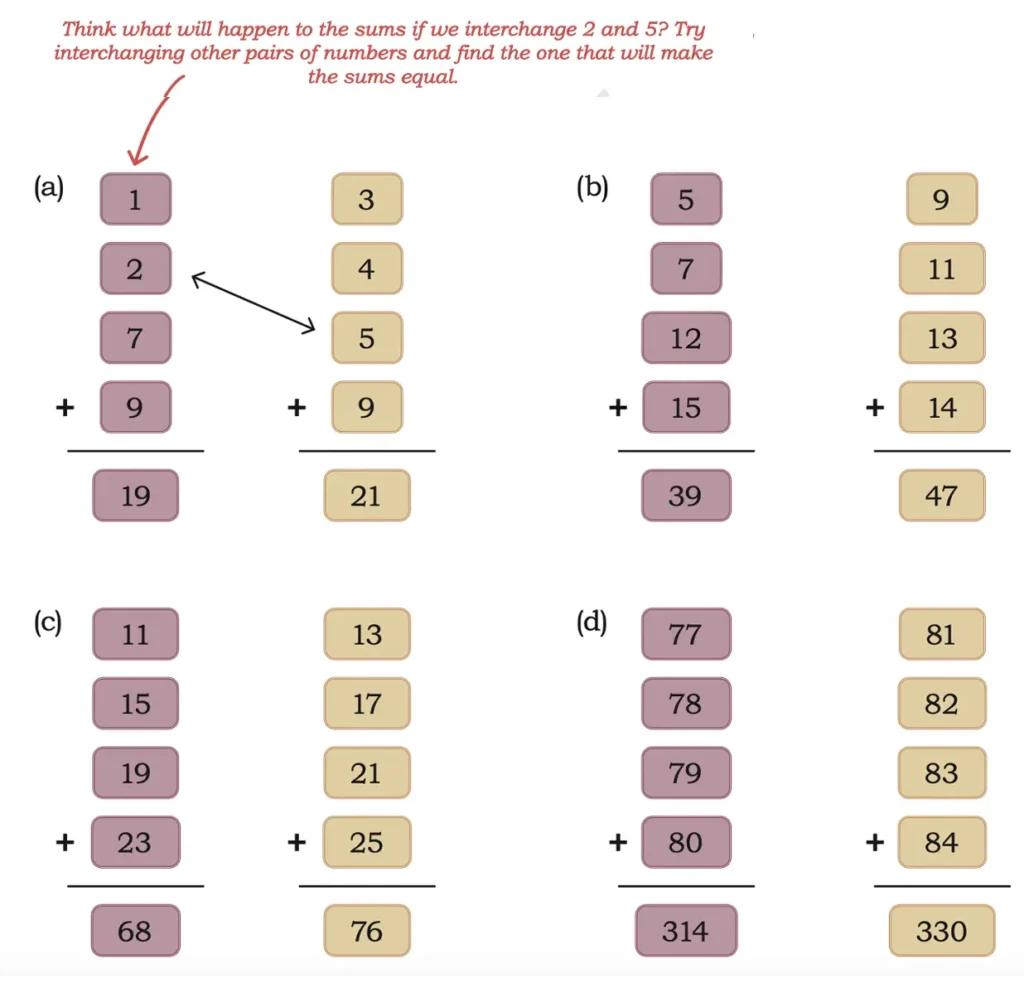
Solution:
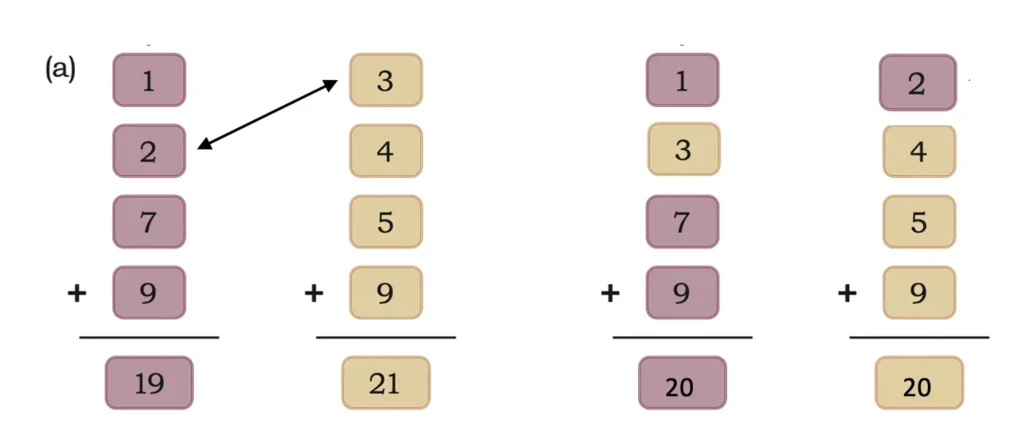
Swap (2 ↔ 3) → both sums become 20. (1 move)
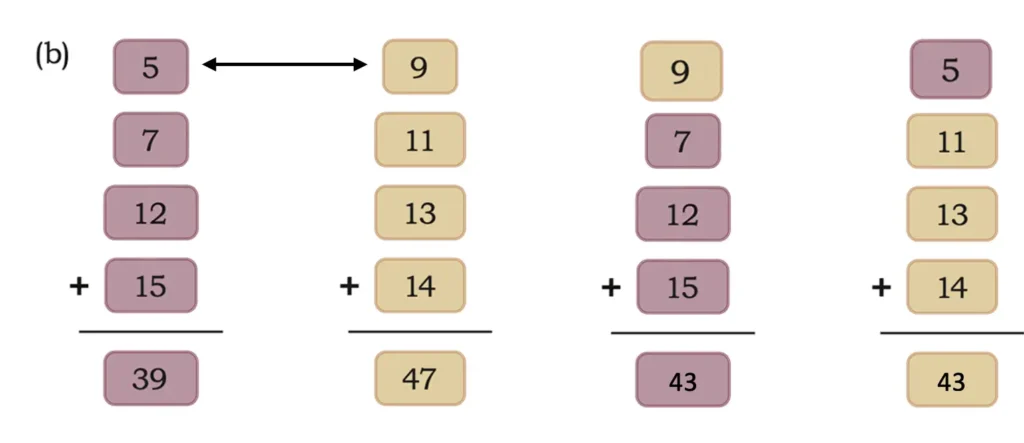
Swap (5 ↔ 9) → both sums become 43. (1 move)
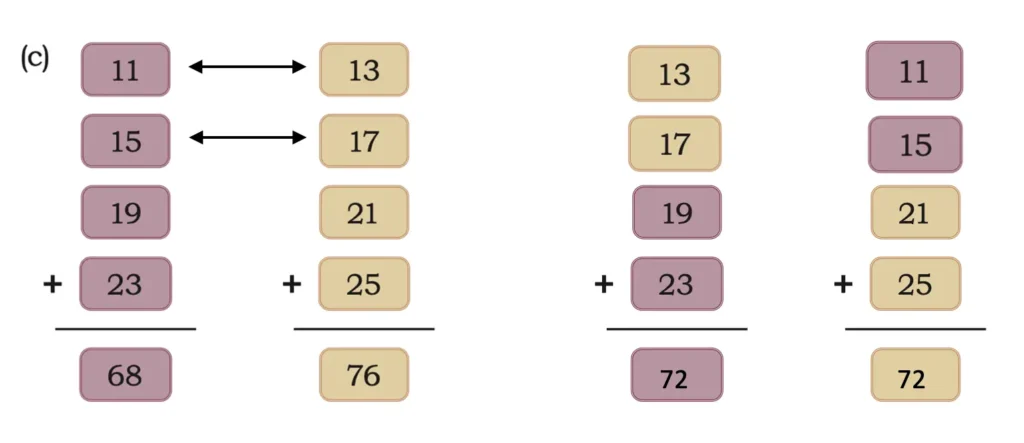
Swap (11 ↔ 13) and (15 ↔ 17) → both sums become 72. (2 moves)
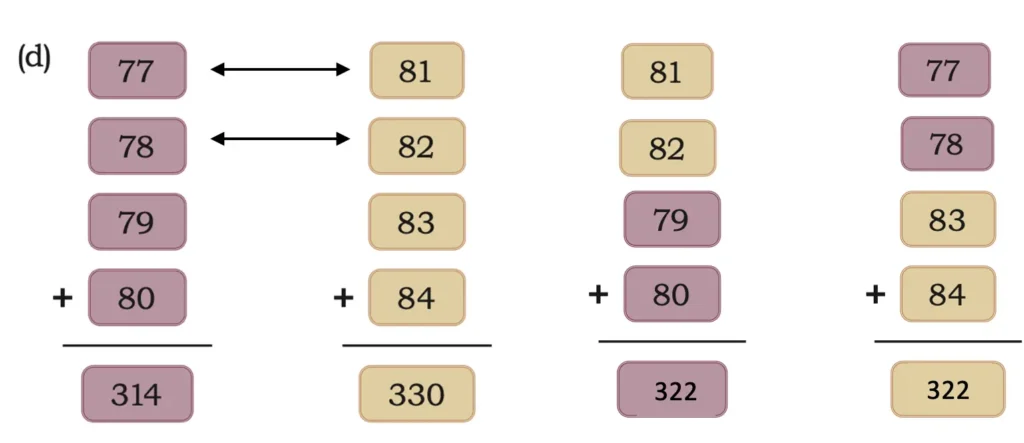
Swap (77 ↔ 81) and (78 ↔ 82) → both sums become 322. (2 moves)
Textbook Page 43
Fuel Arithmetic
1. A lorry has 28 litres of fuel in its tank. An additional 75 litres is filled. What is the total quantity of fuel in the lorry?
The total quantity of fuel in the tank is 28 l + 75 l.

Let us try one more.
2. Find the sum of 49 and 89.
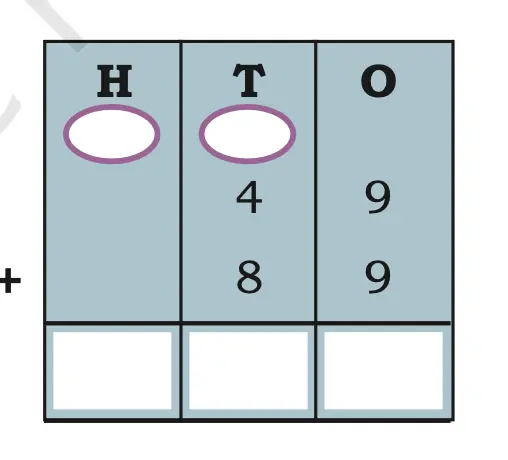
Solution:
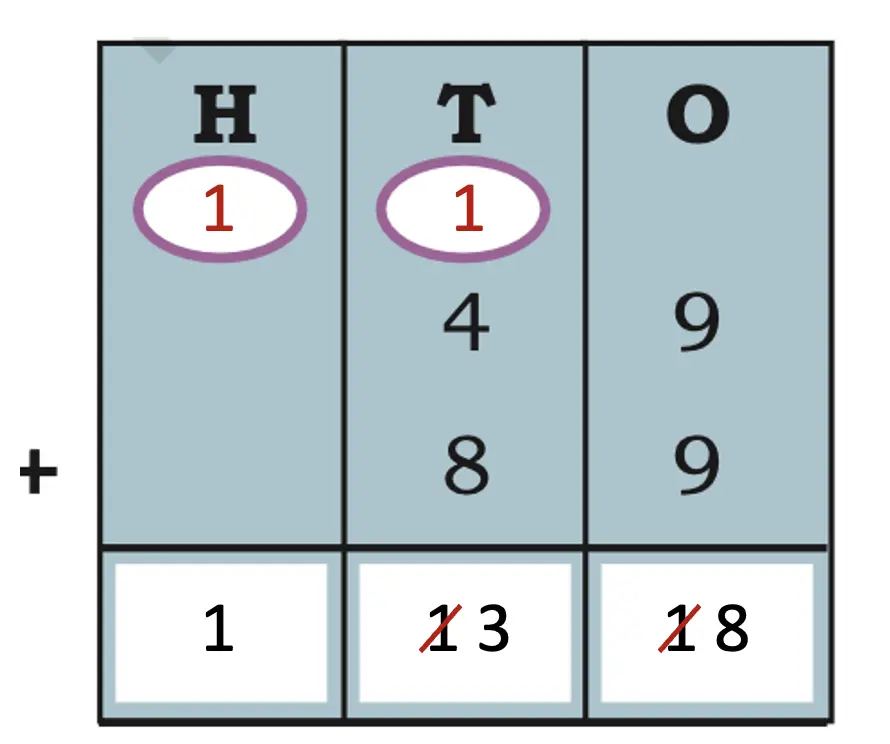
Let Us Solve
Q. Add the following numbers. Wherever possible, find easier ways to add the pairs of numbers.
1. 15 + 79
2. 46 + 99
3. 38 + 35
4. 5 + 89
5. 76 + 28
6. 69 + 20
Solution:
1. 15 + 79
= 15 + (80 – 1)
= 15 + 80 – 1
= 95 – 1 = 94.
2. 46 + 99
= 46 + (100 – 1)
= 46 + 100 – 1
= 146 – 1 = 145.
3. 38 + 35
= (35 + 3) + 35
= 35 + 35 + 3
= 70 + 3 = 73.
4. 5 + 89
= 5 + (90 – 1)
= 5 + 90 – 1
= 95 – 1 = 94.
5. 76 + 28
= (75 + 1) + (25 + 3)
= 75 + 25 + 1 + 3
= 100 + 4 = 104.
6. 69 + 20
= (70 – 1) + 20
= 70 + 20 – 1
= 90 – 1 = 89.
Textbook Page 44
Relationship Between Addition and Subtraction
1. Find the relationship between the numbers in the given statements and fill in the blanks appropriately. (a) If 46 + 21 = 67, then,
67 – 21 = _______.
67 – 46 = _______.
(b) If 198 – 98 = 100, then,
100 + _______ = 198.
198 – _______ = 98.
(c) If 189 + 98 = 287, then,
287 – 98 = _______.
287 – 189 = _______.
(d) If 872 – 672 = 200, then,
200 + _______ = 872.
872 – _______ = 672.
Solution:
(a) If 46 + 21 = 67, then,
67 – 21 = 46.
67 – 46 = 21.
(b) If 198 – 98 = 100, then,
100 + 98 = 198.
198 – 100 = 98.
(c) If 189 + 98 = 287, then,
287 – 98 = 189.
287 – 189 = 98.
(d) If 872 – 672 = 200, then,
200 + 672 = 872.
872 – 200 = 672.
2. In each of the following, write the subtraction and addition sentences that follow from the given sentence.
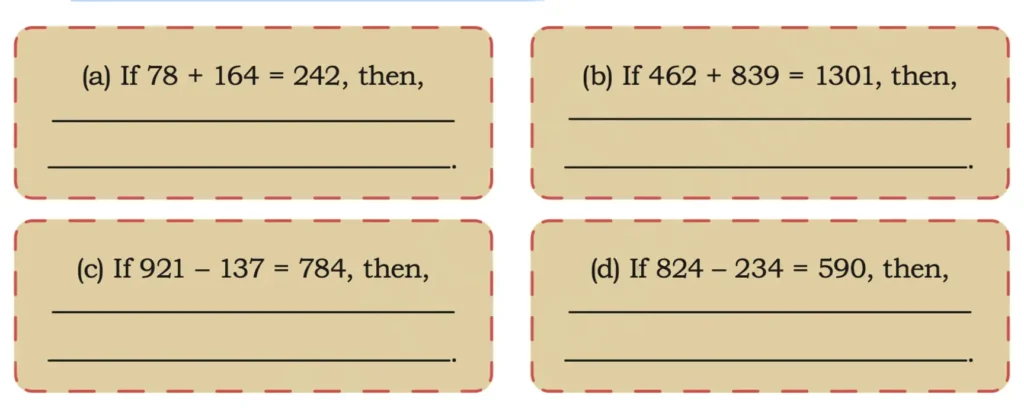
Solution:
(a) If 78 + 164 = 242, then
242 − 164 = 78
242 − 78 = 164
(b) If 462 + 839 = 1301, then
1301 − 839 = 462
1301 − 462 = 839
(c) If 921 − 137 = 784, then
784 + 137 = 921
137 + 784 = 921
(d) If 824 − 234 = 590, then
590 + 234 = 824
234 + 590 = 824
Textbook Page 45
Let Us Solve
1. What is the difference between 82 and 37?
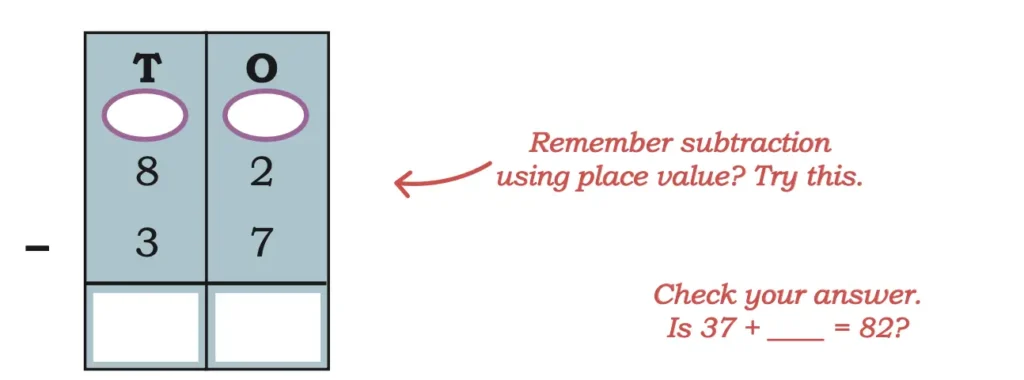
Solution:
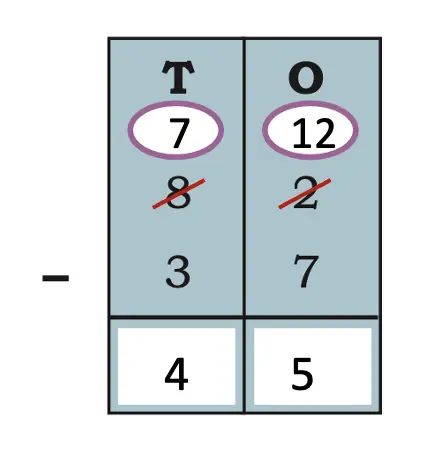
2. 57 – 11 = ______________
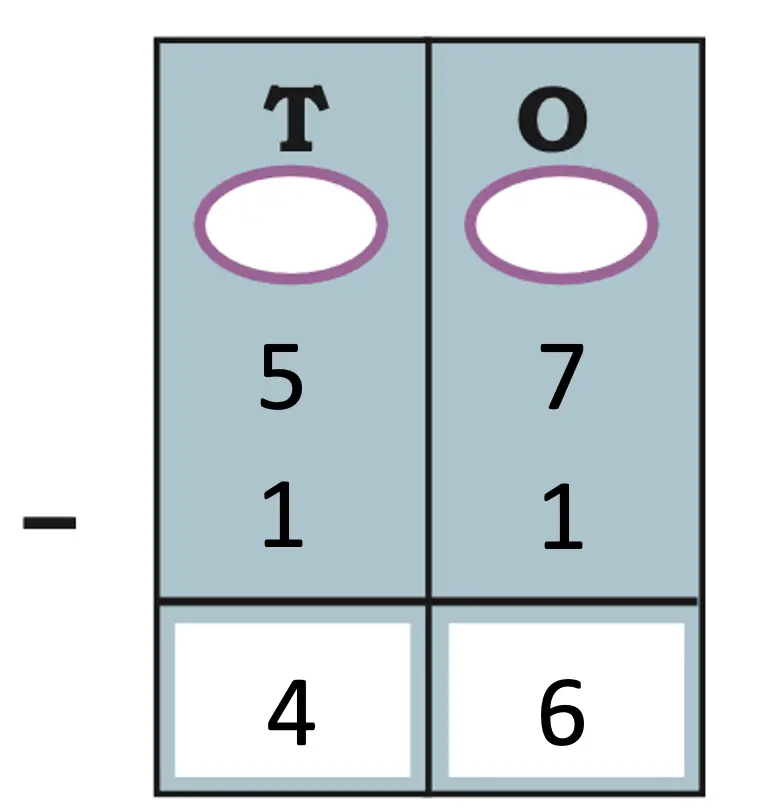
3. 23 – 19 = ______________
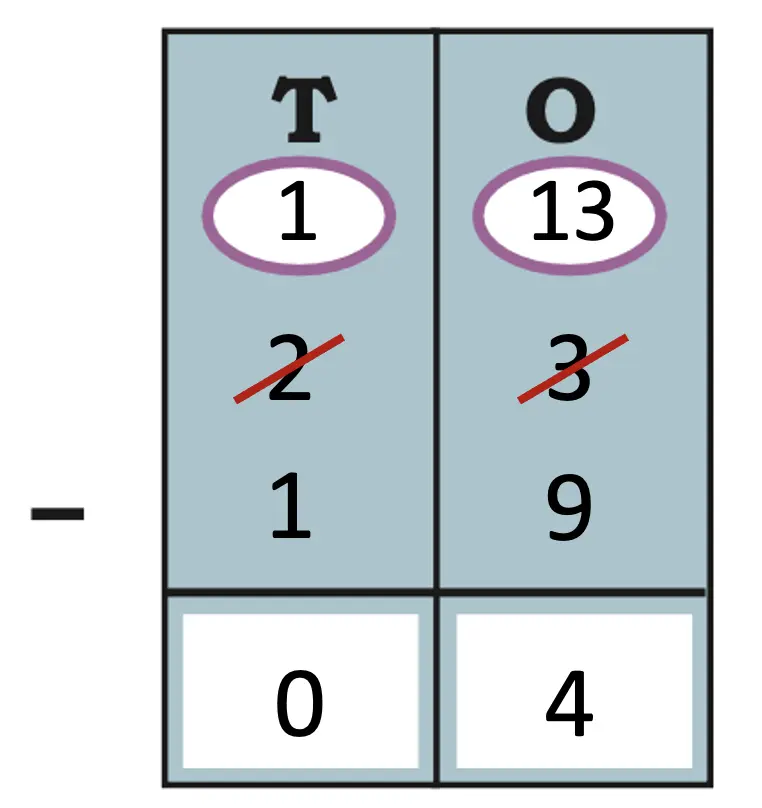
4. 49 – 21 = ______________
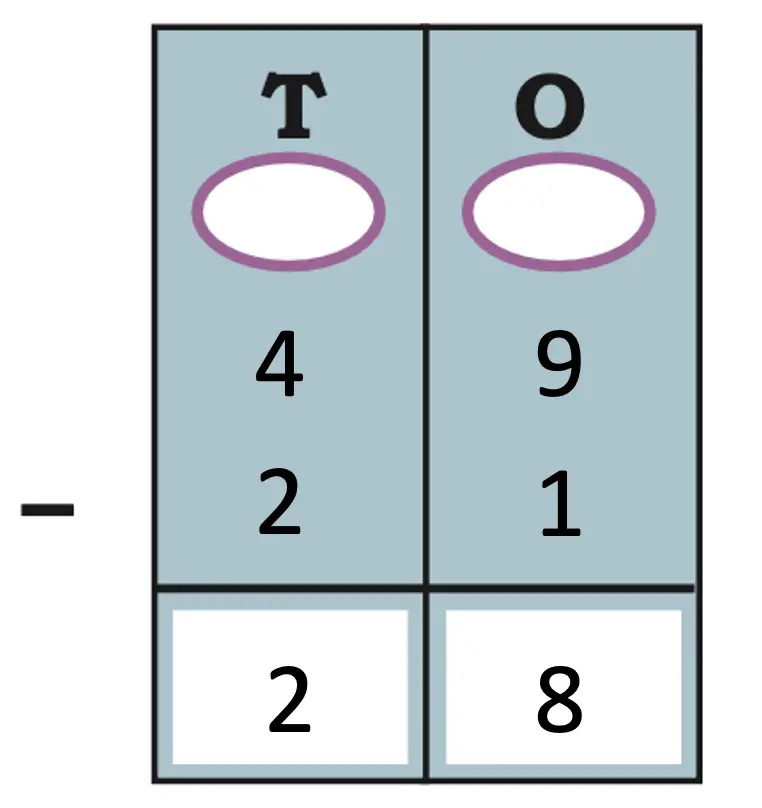
5. 56 – 18 = ______________
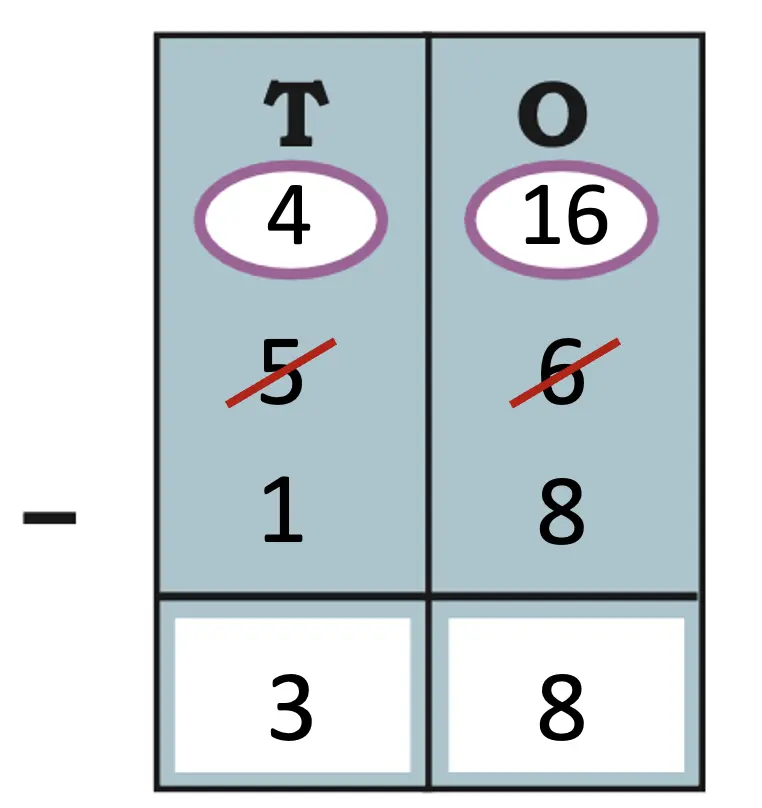
6. 93 – 35 = ______________
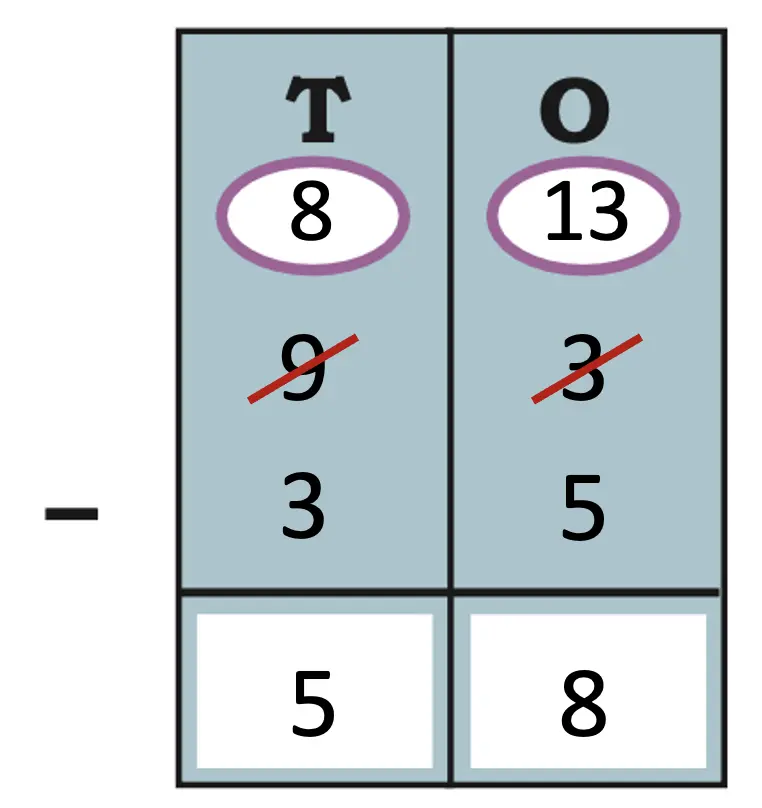
7. 84 – 23 = ______________
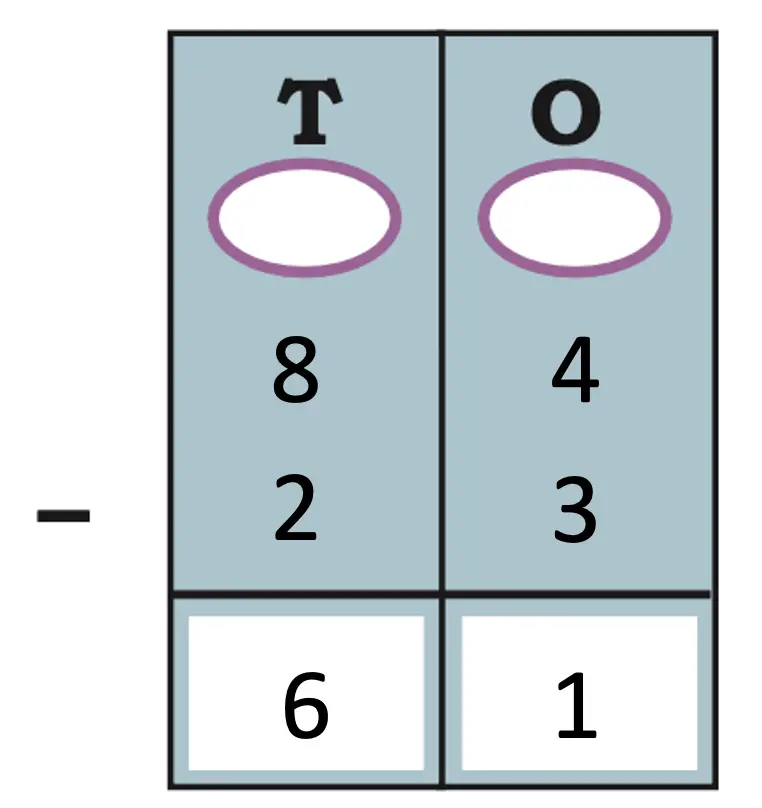
8. 70 – 43 = ______________
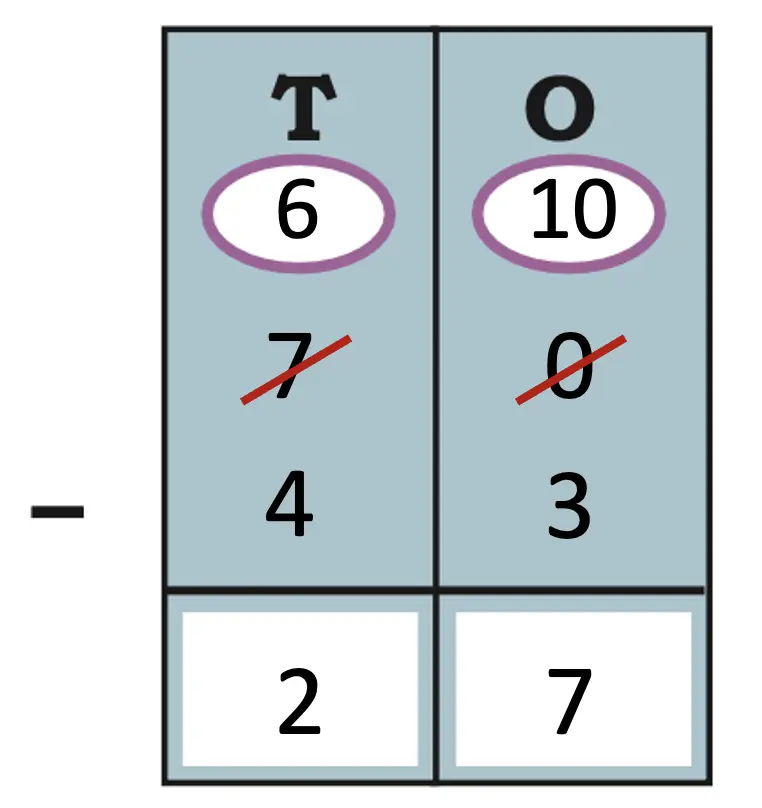
9. 65 – 47 =
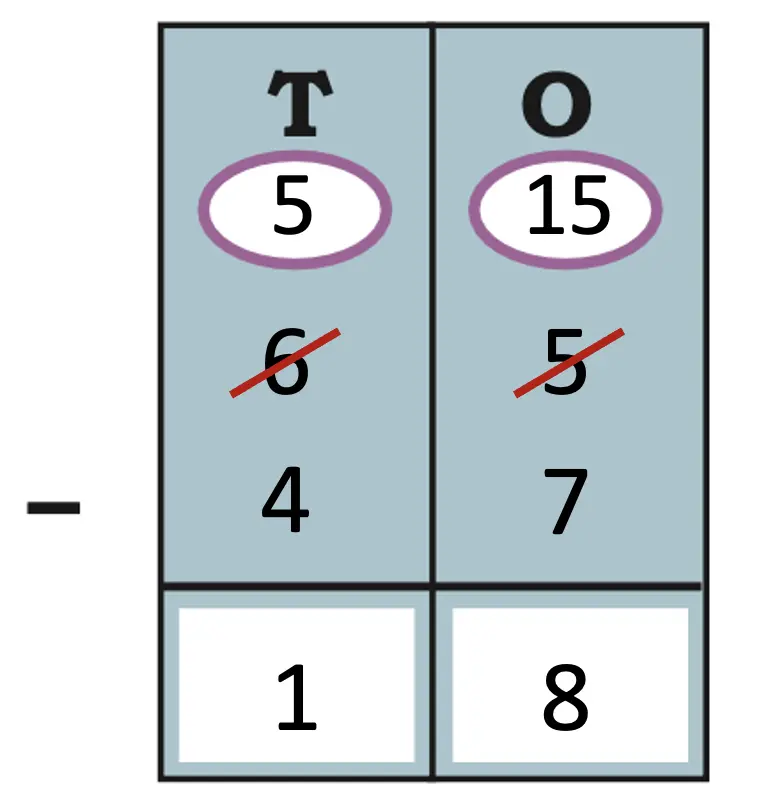
Sums of Consecutive Numbers

1. In each of the boxes above, state whether the sums are even or odd. Explain why this is happening.
Solution:
(i) Sum of 2 consecutive numbers: Always odd.
Reason: Each pair has one even and one odd number; even + odd = odd.
(ii) Sum of 3 consecutive numbers: Alternates even/odd.
Reason: Odd + even + odd = even, and even + odd + even = odd.
(iii) Sum of 4 consecutive numbers: Always even.
Reason: There are two evens and two odds. Even + even = even, odd + odd = even, and even + even = even.
2. What is the difference between the two successive sums in each box? Is it the same throughout?
Solution:
(i) Sum of 2 consecutive numbers:
Differences:
5 – 3 = 2
7 – 5 = 2
9 – 7 = 2.
The difference is always 2.
(ii) Sum of 3 consecutive numbers:
Differences:
9 – 6 = 3
12 – 9 = 3
15 – 12 = 3
The difference is always 3.
(iii) Sum of 4 consecutive numbers:
Differences:
14 – 10 = 4
18 – 14 = 4
22 – 18 = 4
The difference is always 4.
So, the difference between successive sums is the same throughout each box.
3. What will be the difference between two successive sums for:
(a) 5 consecutive numbers (b) 6 consecutive numbers
Solution:
(a) Sum of 5 consecutive numbers:
1 + 2 + 3 + 4 + 5 = 15
2 + 3 + 4 + 5 + 6 = 20
3 + 4 + 5 + 6 + 7 = 25
Difference: 20 – 15 = 5, 25 – 20 = 5.
The difference is 5.
(b) Sum of 6 consecutive numbers:
1 + 2 + 3 + 4 + 5 + 6 = 21
2 + 3 + 4 + 5 + 6 + 7 = 27
3 + 4 + 5 + 6 + 7 + 8 = 33
Difference: 27 – 21 = 6, 33 – 27 = 6.
The difference is 6.
Textbook Page 48
Let Us Solve
1. Find the following sums. Try not to write TTh, Th, H, T, and O at the top. Just align the digits properly, at least for the smaller numbers.
(a) 238 + 367
(b) 1,234 + 12,345
(c) 12 + 123
(d) 46,120 + 12,890
(e) 878 + 8,789
(f) 1,749 + 17,490
Solution:
(a) 238 + 367
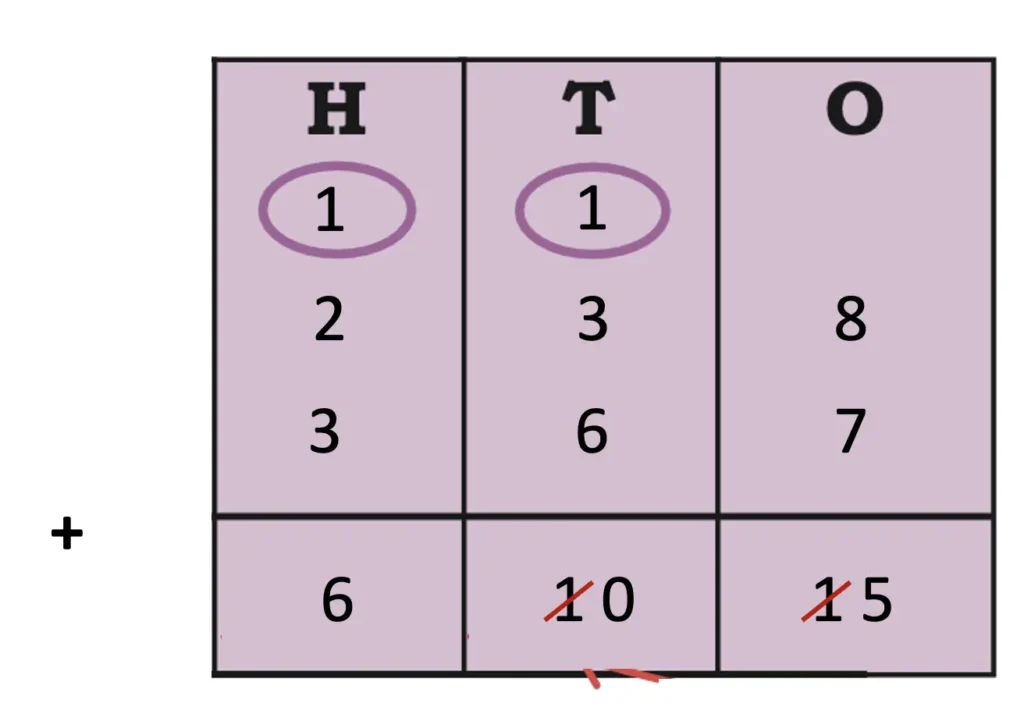
(b) 1,234 + 12,345
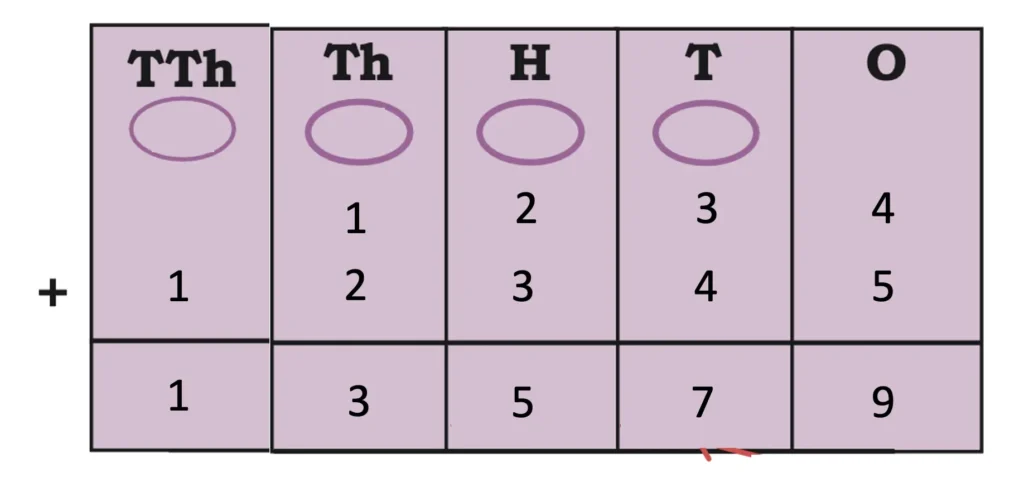
(c) 12 + 123
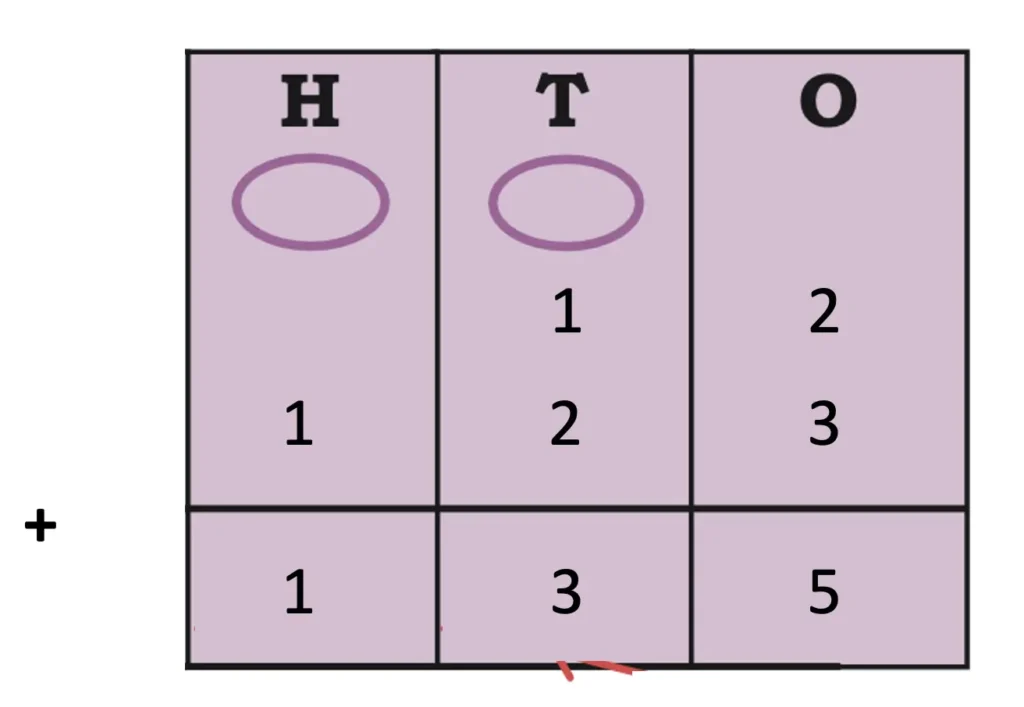
(d) 46,120 + 12,890

(e) 878 + 8,789
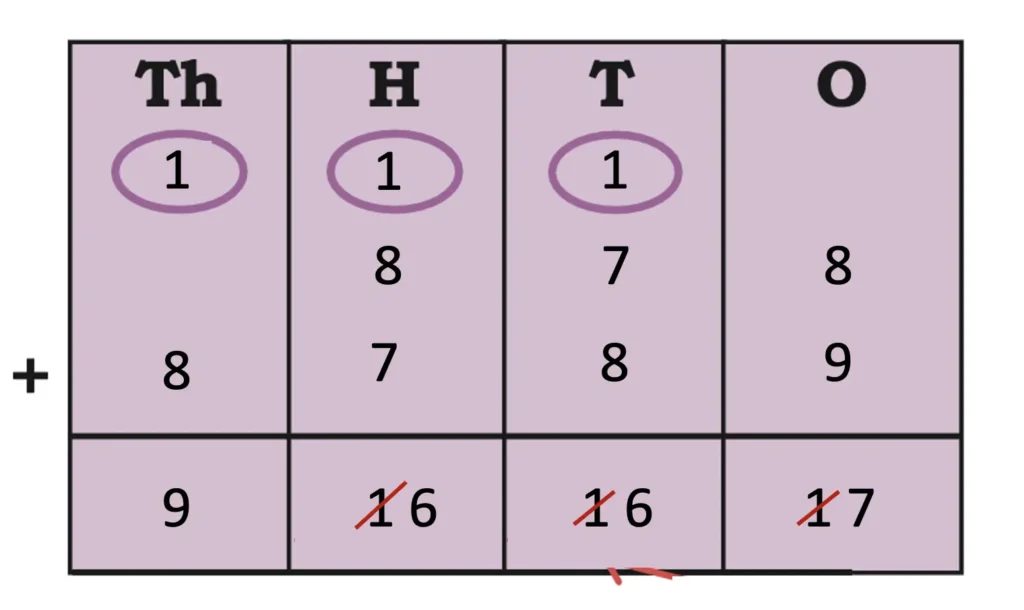
(f) 1,749 + 17,490
